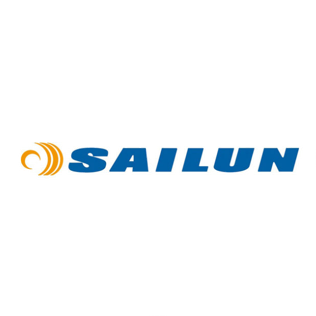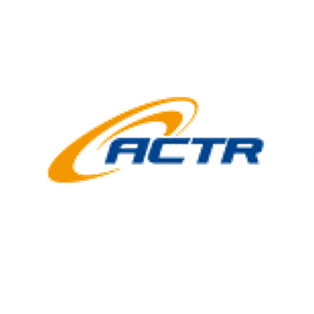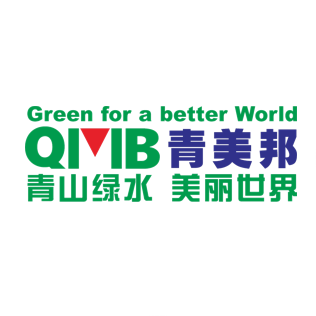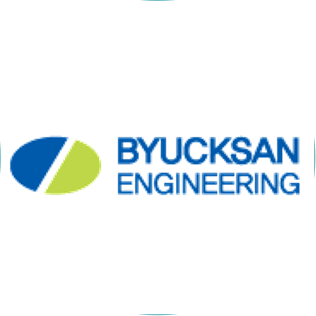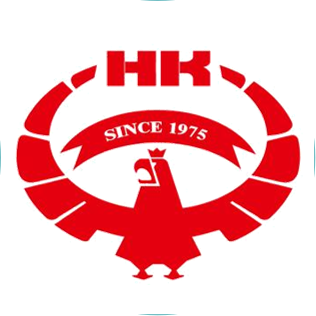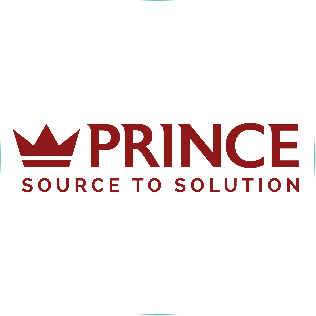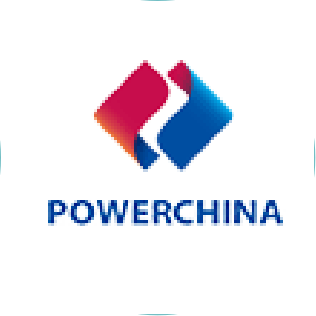Coal fired boiler
Taishan ® Coal-fired boiler
Coal-fired boilers are our competitive and high-performance industrial boiler products in both domestic and international markets. They are equipment that uses coal as fuel and generates heat energy through combustion, which is used for heating or steam production. These boilers are widely used in industrial fields, including power plants, chemical plants, textile mills, food processing plants, etc.

Types
Unsure how to choose a Coal fired boiler?
Contact us for complimentary boiler selection guidance, cost estimations, and expert technical advice for your project.
Featured
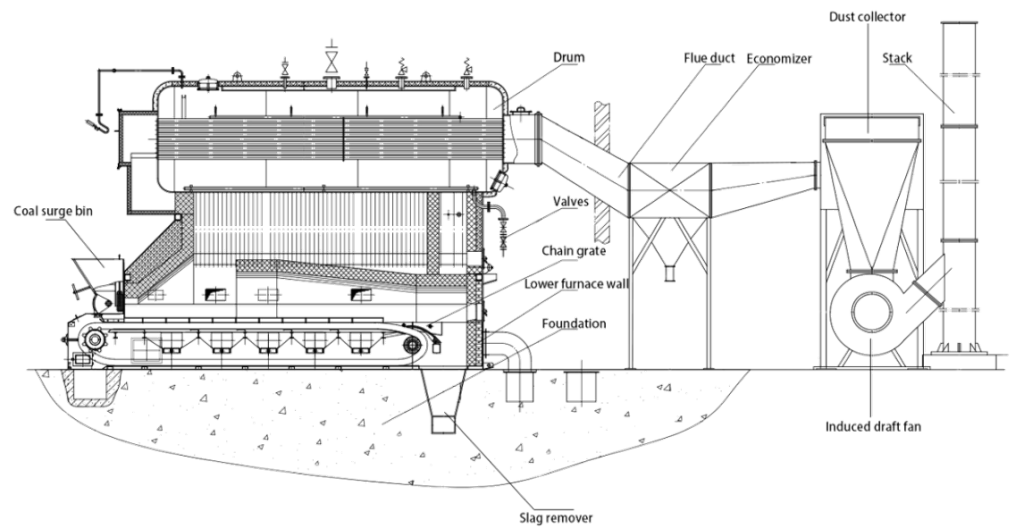

Integrated Control
These boilers typically employ advanced integrated control systems that can consolidate various operations and monitoring functions. Through integrated control, users can conveniently manage multiple parameters, such as temperature, pressure, and fuel supply, enhancing the system's level of intelligence.
Compact Structure
Industrial coal-fired boilers prioritize compactness in design, making them more economical in terms of footprint. The compact structure design facilitates equipment layout in limited spaces, improving flexibility and reducing construction costs.
Flexible Adaptation to Various Industrial Needs
Coal-fired industrial boilers are versatile and can be customized according to different processes and production requirements.
Coal as Fuel
Coal is a common fuel for these boilers, and they can utilize various types of coal, including bituminous coal, anthracite, and brown coal.
Heating and Steam Production
Industrial coal-fired boilers are primarily used for heating and producing high-temperature and high-pressure steam. Steam can be used to drive generators, facilitate heating processes, or serve other industrial purposes.
High-Efficiency Energy Utilization
Modern coal-fired boilers adopt advanced combustion technology and equipment to enhance energy utilization efficiency and reduce exhaust emissions.
Ease of Operation
Industrial coal-fired boilers are designed with user-friendliness in mind, equipped with simplified control interfaces and systems. Operators can easily master basic operations such as start-up, shutdown, and parameter adjustments, reducing the learning curve.
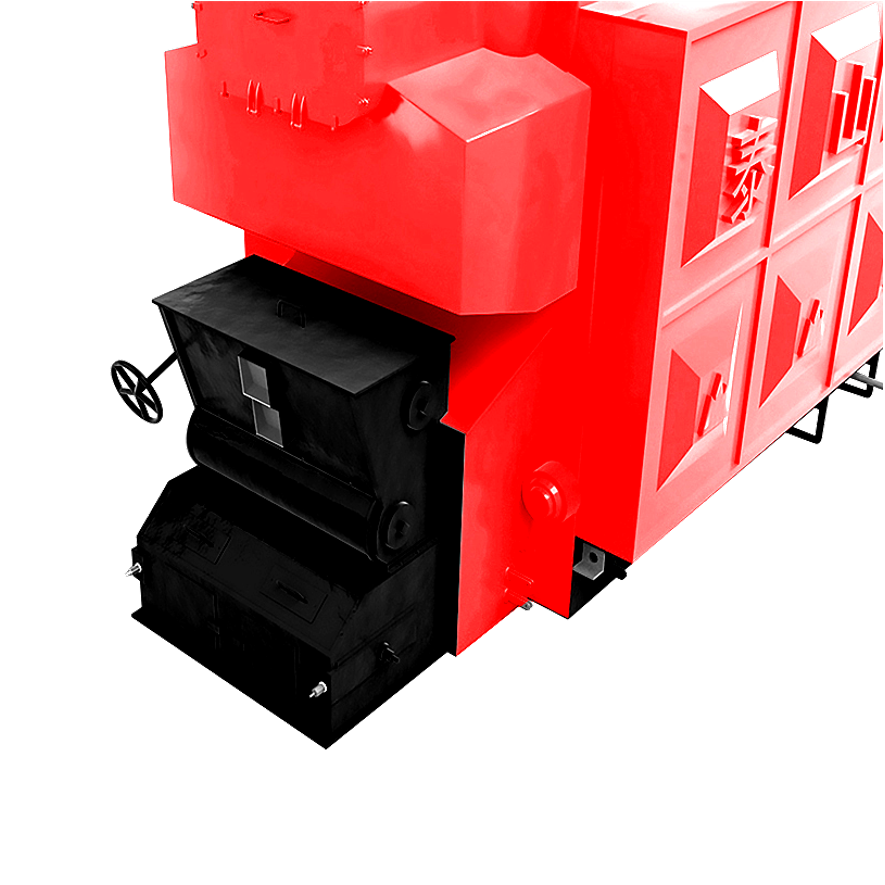
Why Choose Taishan Group ?
Leading coal, biomass and waste to energy solution provider.
- Covering Entire Project Lifecycle A-Z Service.
- Ranked top in China's industrial boiler industry for 10 consecutive years.
- Access cutting-edge, eco-friendly energy solutions.
- Benefit from over 70 years of technical expertise.
- Align with global sustainability initiatives.
- China largest-capacity biomass power generation boiler.
- Experience reliable, efficient equipment for green development.
378000+
Workshop m²
5000+
Trained Staff
1978
History Since
Project Case
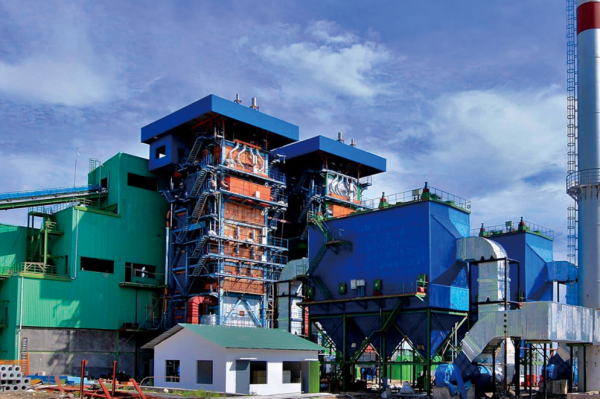
Mongolia's Ministry of Energy, with funding from Korea's Export-Import Bank, enlisted Korean Byucksan Engineering to oversee Central heating upgrade Project in 10 provinces. Taishan Group subcontracted for boiler installations. We supplied 22 sets 10Gcal/h CFB hot water boilers, 2 sets 5Gcal/h CFB hot water boilers and 9 sets 2.4Gcal/h step grate hot water boilers.
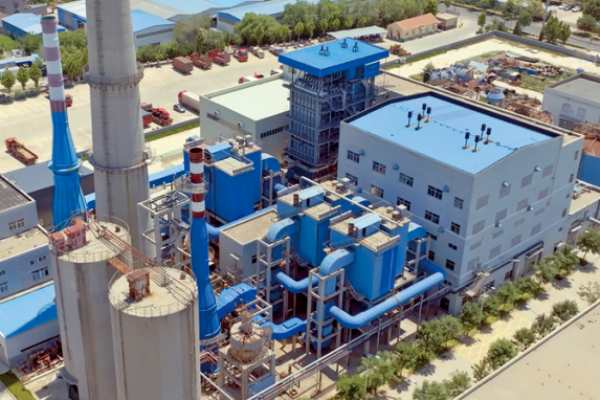
3 sets 240 TPH pulverized coal boilers for Shandong Jincheng Petrochemical Group. It is a major player in China's petrochemical industry, excelling in polyolefins, polyurethanes, specialty chemicals and new materials.
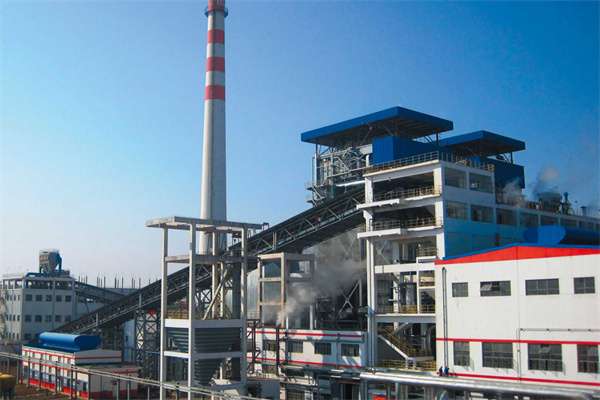
2 sets 170t/h Circulating Fluidized Bed Coal Fired Boiler for Vietnam National Coal and Mineral Industries Group Bauxite-Alumina Project
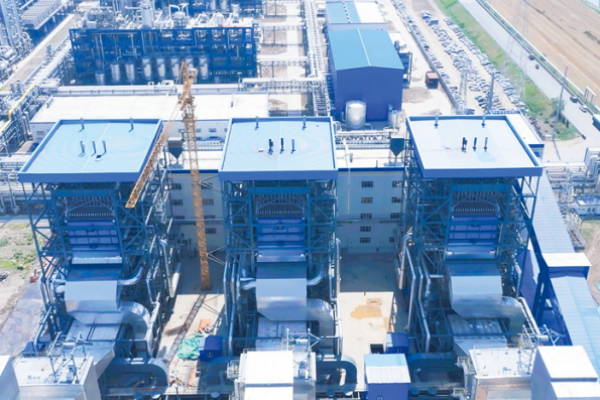
2 Sets 116MW CFB Coal Fired Hot Water Boilers For Aksu Sunshine Thermal Company Heating Projects.
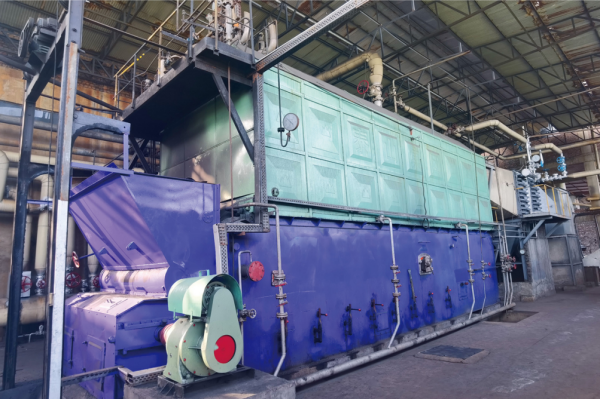
20TPH coal fired steam boiler for UTOPIA INDUSTRIES (PRIVATE) LTD Textile Factory Steam Boiler Project in Pakistan.
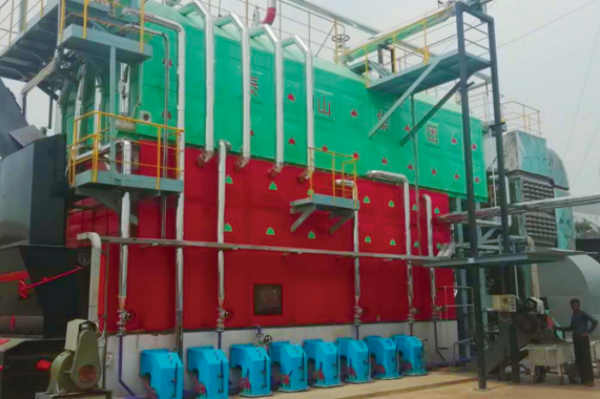
We supplied a 15TPH coal fired steam boiler for M.Y BARI MILLS (PVT) LTD. Bari Mills is a top family textile mill, exporting bath products to major retailers, hotels, and healthcare industries. Key markets are US, Canada, Australia, and Europe.
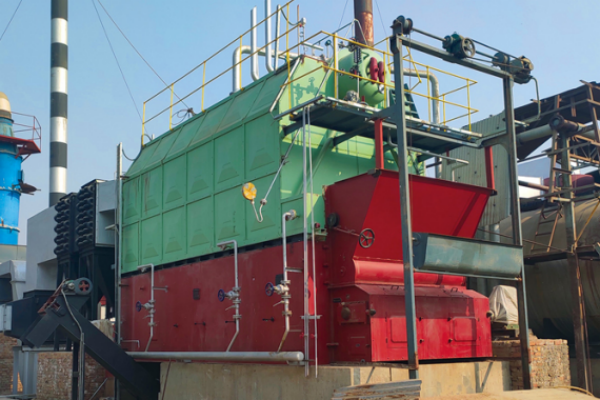
15 TPH coal fired steam boiler for CROWN TEXTILE. CROWN TEXTILE is a major local knitting apparel production enterprise that primarily exports to Europe and America.
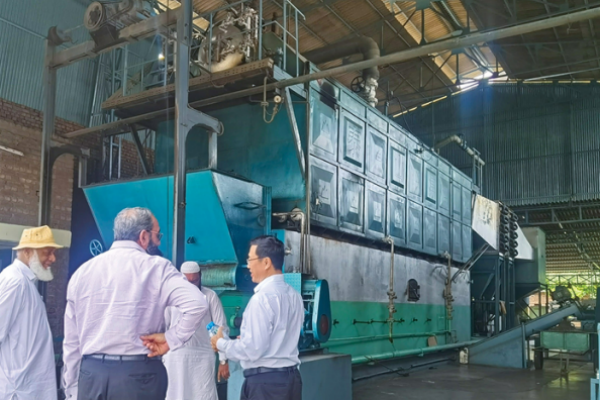
NIDA Textile Mills is a renowned textile conglomerate in Tanzania, includes printing, dyeing, and fabric companies.
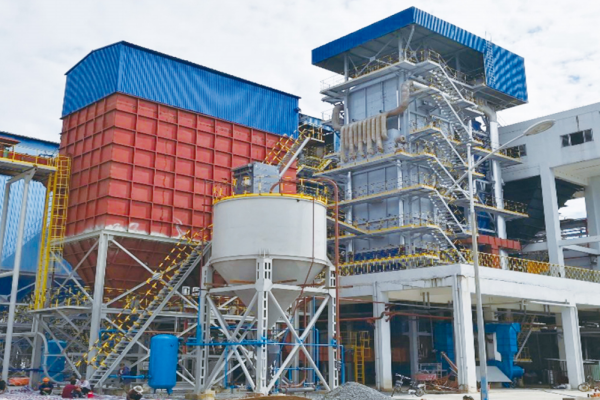
Sailun Tyre Vietnam 35 tons and 75 tons fluidized bed Coal Fired Boiler EPC project
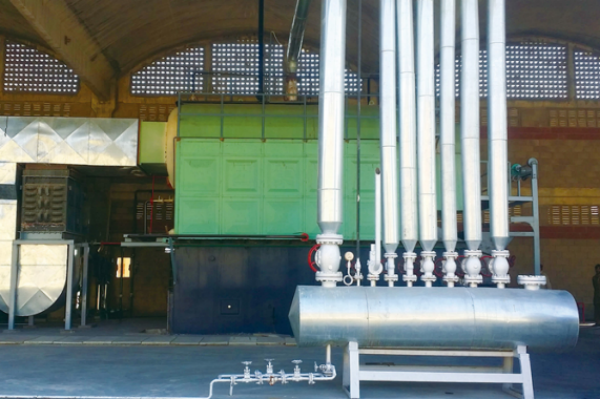
12 TPH anthracite fired steam boiler for Fulong Paper Industry, the Taiwanese-owned enterprise located in Vietnam.
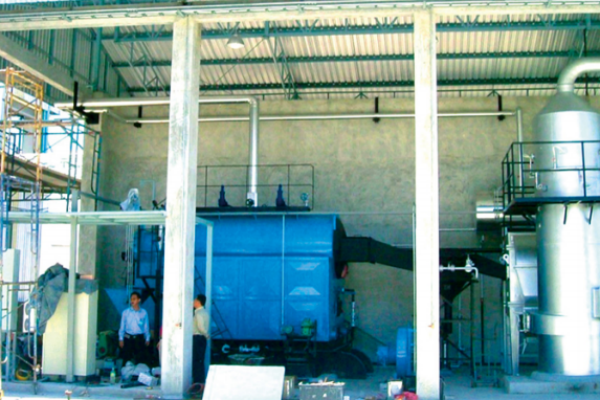
We supplied over 20 sets coal steam boilers for BEST Industry Group . BEST Industry Group is involved in the vegetable oil business, especially in the manufacture of palm cooking oil, it is one of the top 5 largest palm oil refiners in Indonesia.
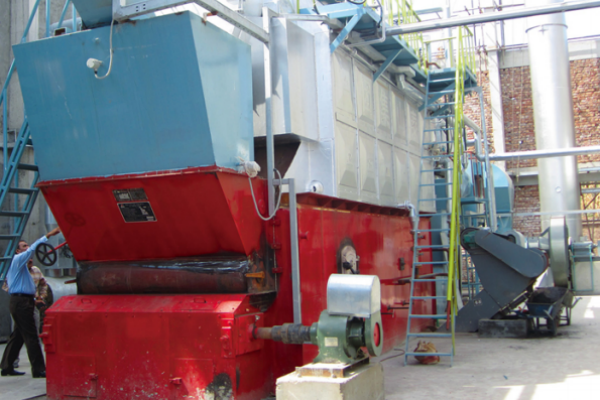
20 TPH coal boiler for Pakistan Salva Group Fazal Paper Mills paper production.
FAQ
Frequently Asked Questions about Coal Fired Boiler.
A coal-fired boiler is a type of boiler that burns coal as its fuel source to generate heat or steam for various industrial processes or heating applications. Coal-fired boilers are commonly used in power plants for electricity generation and in industrial settings such as factories, chemical plants, and refineries.
The basic principle of operation involves combustion of pulverized coal in a furnace, where the heat produced is used to convert water into steam. This steam then drives turbines connected to generators, producing electricity. In other applications, the steam generated by the coal-fired boiler may be used for heating purposes or to power various industrial processes.
Coal-fired boilers come in various configurations and designs, including:
1. Pulverized coal-fired boilers: Coal is ground to a fine powder and blown into the combustion chamber, where it burns efficiently.
2. Cyclone-fired boilers: Coal and air are mixed in a cyclone burner, where combustion occurs at high temperatures.
3. Fluidized bed boilers: Coal is burned in a bed of inert particles (such as sand or limestone) suspended by a stream of air or gas, allowing for efficient combustion and reduced emissions.
The core components of a CFB boiler include the combustion chamber, cyclone separators (to separate and recirculate the bed material), heat exchangers or boiler tubes (to absorb the heat generated by combustion), and control systems for managing air supply and fuel feed. The circulation of the bed material enhances heat transfer and ensures uniform temperature distribution within the combustion chamber, leading to efficient and clean combustion.
A coal-fired boiler works by burning pulverized coal to generate heat, which is then used to produce steam. Here’s a simplified explanation of how it operates:
1. Fuel Supply: Pulverized coal, typically in the form of fine powder, is fed into the boiler furnace through coal feeders. The coal may be stored in bunkers near the boiler for easy access.
2. Combustion: Inside the furnace or combustion chamber, the pulverized coal is mixed with combustion air (primary air) and ignited. The combustion process releases heat energy, raising the temperature of the furnace.
3. Heat Exchange: The heat generated from burning coal heats up water-filled tubes or pipes that run through the boiler. These tubes are surrounded by the hot gases produced by combustion. As the water absorbs heat, it begins to boil and turn into steam.
4. Steam Generation: The steam produced by the boiler is collected in a steam drum at the top of the boiler. The steam is then routed out of the boiler through piping to be used for various applications, such as powering turbines in a power plant, heating processes in industrial facilities, or providing steam for heating purposes.
5. Expansion and Energy Conversion: In power plants, the steam is directed through turbines, where it expands and causes the turbine blades to rotate. The rotating turbines are connected to generators, which convert the mechanical energy of the turbines into electrical energy. This electricity is then transmitted to the grid for distribution to consumers.
6. Cooling and Condensation: After passing through the turbines, the steam is condensed back into water in a condenser using cooling water. The condensed water is then returned to the boiler to be reheated and reused in the steam generation process, completing the cycle.
Throughout this process, various controls and safety mechanisms are in place to regulate the combustion process, maintain boiler pressure and temperature, and ensure safe and efficient operation.
It’s important to note that coal-fired boilers come in different configurations, such as pulverized coal-fired boilers, fluidized bed boilers, and cyclone-fired boilers, each with its own variations in design and operation. However, the basic principles of combustion, heat exchange, steam generation, and energy conversion remain consistent across these different types of boilers.
Coal-fired boilers do have some advantages, though their environmental drawbacks are significant and driving a shift towards cleaner energy sources. Here’s a breakdown of the pros:
Fuel Efficiency: Compared to other solid fuels like wood, coal packs more energy per unit volume. This translates to less frequent refueling for a coal boiler.
Reliable Heat Source: Coal is a dependable fuel source not impacted by weather fluctuations like solar or wind power. Coal-fired boilers can provide consistent heat around the clock.
Lower Fuel Cost (in some regions): In certain areas, coal can be a relatively inexpensive fuel source compared to other options. This can be a factor for industrial facilities.
Simpler Technology: Coal-fired boiler technology is well-established and understood. This can mean lower upfront costs and easier maintenance for experienced technicians.
Bulk Storage Potential: Coal can be stored relatively easily in large volumes without taking up excessive space and is resistant to pests or rot unlike firewood.
It’s important to note that the advantages of coal-fired boilers need to be weighed against their environmental consequences. Because of air and greenhouse gas emissions, regulations and a shift towards cleaner energy sources are making coal a less attractive option in many areas.
Coal-fired boilers also have several disadvantages, primarily related to their environmental impact and operational challenges:
1. Greenhouse Gas Emissions: Burning coal releases large amounts of carbon dioxide (CO2) and other greenhouse gases into the atmosphere, contributing to climate change and global warming. Coal-fired boilers are significant contributors to CO2 emissions, which are a major driver of climate change.
2. Air Pollution: Coal combustion emits various pollutants into the air, including sulfur dioxide (SO2), nitrogen oxides (NOx), particulate matter (PM), and hazardous air pollutants (HAPs) such as mercury and arsenic. These pollutants can have adverse effects on human health, ecosystems, and air quality, leading to respiratory problems, cardiovascular diseases, acid rain, and smog formation.
3. Ash Disposal and Waste Management: Coal combustion produces ash and other solid residues, which must be disposed of properly to prevent environmental contamination. Ash disposal can pose challenges due to the large volumes generated and the potential for leaching of toxic substances into soil and water bodies if not managed carefully.
4. Water Consumption and Pollution: Coal-fired power plants require large quantities of water for cooling purposes, which can strain local water resources and ecosystems, particularly in water-stressed regions. Additionally, wastewater discharges from coal-fired boilers may contain pollutants such as heavy metals and organic compounds, posing risks to aquatic life and water quality.
5. Coal Mining Impacts: The extraction and transportation of coal for use in boilers can have significant environmental and social impacts, including habitat destruction, land degradation, water pollution, and displacement of communities. Coal mining operations also contribute to deforestation, biodiversity loss, and greenhouse gas emissions from land-use changes.
6. Operational Challenges: Coal-fired boilers require regular maintenance and cleaning to ensure efficient and safe operation. Issues such as ash buildup, fouling of heat exchanger surfaces, and corrosion can affect boiler performance and reliability, leading to downtime and increased operating costs.
7. Limited Fuel Flexibility: While coal is abundant and relatively inexpensive, coal-fired boilers have limited flexibility in fuel selection compared to some other types of boilers. They are designed to burn coal efficiently and may require significant modifications to accommodate alternative fuels or renewable energy sources.
8. Regulatory Compliance and Costs: Coal-fired boilers are subject to stringent environmental regulations aimed at reducing emissions of pollutants and mitigating their environmental impact. Compliance with these regulations often requires the installation of costly pollution control technologies, which can increase the overall cost of coal-fired power generation.
Overall, the environmental and social impacts of coal-fired boilers underscore the need for transitioning to cleaner and more sustainable energy sources to mitigate climate change, improve air quality, and protect ecosystems and public health.
The life expectancy of a coal boiler can vary depending on various factors, including the quality of construction, maintenance practices, operating conditions, and technological advancements. Generally, well-maintained coal boilers can have a lifespan of 20 to 40 years or more. However, several factors can influence the longevity of a coal boiler:
1. Quality of Construction: The durability and longevity of a coal boiler depend on the quality of materials used in its construction and the adherence to engineering standards and specifications during manufacturing. High-quality components and robust construction can contribute to a longer lifespan.
2. Maintenance Practices: Regular maintenance and servicing are essential for prolonging the lifespan of a coal boiler. Proper maintenance includes cleaning, inspection, lubrication, and replacement of worn-out parts to prevent corrosion, fouling, and mechanical failures.
3. Operating Conditions: The operating conditions of a coal boiler, such as temperature, pressure, and load fluctuations, can affect its lifespan. Extreme operating conditions or frequent cycling between startup and shutdown can accelerate wear and tear on boiler components, reducing longevity.
4. Water Treatment: Proper water treatment is crucial for preventing corrosion, scale buildup, and fouling in coal boilers. Effective water treatment programs can extend the lifespan of boiler tubes, piping, and other components by minimizing the risk of damage from water-related issues.
5. Emissions Control: The implementation of emissions control technologies, such as flue gas desulfurization systems and particulate control devices, can impact the lifespan of a coal boiler. These technologies help reduce corrosion and fouling caused by acidic gases and particulate matter, thereby preserving boiler integrity.
6. Technological Advancements: Advances in boiler design, materials, and technology can enhance the efficiency, reliability, and lifespan of coal boilers. Upgrading older boilers with modern control systems and pollution control equipment can improve performance and extend their operational life.
7. Regulatory Compliance: Compliance with environmental regulations and emission standards may require retrofitting or upgrading coal boilers with pollution control equipment, which can affect their lifespan and operational costs.
It’s important for operators and owners of coal boilers to implement proactive maintenance strategies, monitor performance closely, and invest in necessary upgrades or replacements to ensure safe, efficient, and sustainable operation over the lifespan of the equipment. Additionally, as the energy industry transitions towards cleaner and more sustainable alternatives, the lifespan of coal boilers may be influenced by factors such as regulatory changes, market dynamics, and technological innovations in renewable energy and energy storage.
The efficiency of a coal-fired steam boiler can vary depending on factors such as the design of the boiler, the type of coal used, operating conditions, and the implementation of efficiency-enhancing technologies. Generally, coal-fired steam boilers can achieve thermal efficiencies ranging from 70% to over 90%, with modern, well-designed boilers typically performing at the higher end of this range.
Several factors contribute to the efficiency of a coal-fired steam boiler:
1. Boiler Design: The design of the boiler, including the arrangement of combustion chambers, heat exchange surfaces, and flow paths, plays a significant role in determining its efficiency. Modern boiler designs incorporate features such as high-efficiency heat exchangers, optimized combustion systems, and advanced control technologies to maximize thermal efficiency.
2. Combustion Efficiency: Efficient combustion of coal is critical for maximizing boiler efficiency. Factors such as proper fuel-air mixing, optimal combustion chamber design, and effective control of combustion parameters (such as excess air and fuel-to-air ratio) can improve combustion efficiency and reduce heat loss.
3. Heat Recovery: Coal-fired steam boilers often incorporate heat recovery systems, such as economizers and air preheaters, to capture waste heat from flue gases and preheat boiler feedwater. Heat recovery systems help increase overall efficiency by utilizing waste heat that would otherwise be lost to the environment.
4. Steam Generation Process: The efficiency of steam generation in a coal-fired boiler depends on factors such as steam pressure, temperature, and quality. Efficient steam generation systems optimize steam conditions to minimize energy losses during steam production and distribution.
5. Boiler Maintenance: Proper maintenance practices, including regular cleaning, inspection, and tuning, are essential for maintaining high boiler efficiency. Preventive maintenance helps ensure optimal boiler performance and reduces the risk of efficiency losses due to fouling, corrosion, or mechanical problems.
6. Pollution Control Equipment: Some pollution control technologies, such as selective catalytic reduction (SCR) and electrostatic precipitators (ESP), can also contribute to boiler efficiency by reducing flue gas emissions and minimizing energy losses associated with pollution control processes.
Overall, the efficiency of a coal-fired steam boiler can be influenced by various factors, and continuous efforts to optimize design, operation, and maintenance practices are essential for achieving and maintaining high levels of efficiency. Additionally, as the energy industry focuses on reducing greenhouse gas emissions and transitioning to cleaner energy sources, the development and adoption of advanced coal combustion technologies and carbon capture and storage (CCS) solutions may further improve the efficiency and environmental performance of coal-fired boilers.
Choosing the right coal-fired boiler requires careful consideration of several factors to ensure optimal performance, efficiency, reliability, and compliance with regulatory requirements. Here are some key steps to help guide the selection process:
1. Determine Requirements and Specifications: Define the specific requirements and specifications for the coal-fired boiler, including capacity, steam pressure and temperature, fuel type and quality, emissions limits, operational flexibility, and budget constraints. Consider factors such as the intended application (e.g., power generation, industrial heating), operating conditions, and regulatory compliance requirements.
2. Evaluate Boiler Types and Technologies: Assess different types of coal-fired boilers, such as pulverized coal-fired boilers, fluidized bed boilers, and cyclone-fired boilers, to determine which best meets your needs and preferences. Consider factors such as efficiency, emissions performance, fuel flexibility, reliability, and ease of maintenance.
3. Consider Fuel Characteristics: Evaluate the characteristics of the coal fuel available for use, including moisture content, ash content, heating value, particle size distribution, and sulfur content. Choose a boiler design and combustion system that can accommodate the specific fuel properties and optimize combustion efficiency while minimizing emissions.
4. Assess Efficiency and Performance: Compare the thermal efficiency, energy efficiency, and overall performance of different coal-fired boiler models and configurations. Consider factors such as heat transfer efficiency, combustion efficiency, steam generation capacity, turndown ratio, and operational flexibility to ensure optimal performance under varying operating conditions.
5. Review Emissions Control Technologies: Assess the availability and effectiveness of emissions control technologies for reducing air pollutants and greenhouse gas emissions from coal-fired boilers. Evaluate options such as flue gas desulfurization systems, particulate control devices, selective catalytic reduction (SCR), and electrostatic precipitators (ESP) to ensure compliance with regulatory requirements and minimize environmental impact.
6. Evaluate Operational and Maintenance Requirements: Consider the operational and maintenance requirements of different coal-fired boiler designs, including accessibility for inspection and servicing, ease of cleaning, availability of spare parts, and requirements for water treatment and ash disposal. Choose a boiler design that is reliable, easy to operate, and cost-effective to maintain over its lifespan.
7. Consult with Experts and Suppliers: Seek advice and guidance from boiler manufacturers, engineering firms, and industry experts to help evaluate options, analyze technical specifications, and make informed decisions. Consider factors such as supplier reputation, experience, technical support, and after-sales service when selecting a boiler supplier.
8. Consider Long-Term Sustainability: Take into account long-term sustainability considerations, such as future regulatory trends, environmental impact, energy security, and potential for future upgrades or retrofits. Choose a coal-fired boiler that aligns with your organization’s sustainability goals and can adapt to evolving market conditions and technology advancements.
By carefully considering these factors and conducting a comprehensive evaluation of available options, you can choose the most suitable coal-fired boiler for your specific requirements, ensuring efficient, reliable, and environmentally responsible operation over the long term.
Coal-fired boilers and gas-fired boilers differ primarily in the type of fuel they use and the combustion process involved. Here are some key differences between the two types of boilers:
1. Fuel Type:
– Coal-fired boiler: Burns pulverized coal as its primary fuel source. Coal is a fossil fuel that is abundant and widely available but produces higher emissions of greenhouse gases and air pollutants compared to natural gas.
– Gas-fired boiler: Burns natural gas or liquefied petroleum gas (LPG) as its primary fuel source. Natural gas is a cleaner-burning fossil fuel compared to coal, resulting in lower emissions of carbon dioxide (CO2), sulfur dioxide (SO2), nitrogen oxides (NOx), and particulate matter.
2. Combustion Process:
– Coal-fired boiler: Combustion of coal involves burning pulverized coal in a furnace or combustion chamber to generate heat. Coal combustion typically occurs at lower temperatures compared to gas combustion, requiring specialized combustion systems and emissions control technologies to optimize efficiency and reduce emissions.
– Gas-fired boiler: Combustion of natural gas or LPG involves mixing the gas with air and igniting it in a burner to produce a flame. Gas combustion occurs at higher temperatures compared to coal combustion, resulting in cleaner and more efficient combustion with lower emissions of pollutants.
3. Efficiency:
– Coal-fired boiler: Thermal efficiency of coal-fired boilers can vary but generally ranges from 70% to over 90%, depending on factors such as boiler design, operating conditions, and emissions control technologies.
– Gas-fired boiler: Gas-fired boilers typically have higher thermal efficiency compared to coal-fired boilers, with efficiencies ranging from 80% to over 95%, depending on the boiler design and operating parameters.
4. Emissions:
– Coal-fired boiler: Produces higher emissions of greenhouse gases (CO2) and air pollutants (SO2, NOx, PM) compared to gas-fired boilers. Requires emissions control technologies such as flue gas desulfurization (FGD), selective catalytic reduction (SCR), and particulate control devices to meet environmental regulations.
– Gas-fired boiler: Produces lower emissions of CO2, SO2, NOx, and PM compared to coal-fired boilers. Natural gas combustion emits fewer pollutants and requires less extensive emissions control compared to coal combustion.
5. Environmental Impact:
– Coal-fired boiler: Has a greater environmental impact due to higher emissions of greenhouse gases and air pollutants, as well as environmental impacts associated with coal mining, transportation, and disposal of ash and other solid residues.
– Gas-fired boiler: Has a lower environmental impact compared to coal-fired boilers, with cleaner combustion and lower emissions of pollutants. Natural gas is considered a cleaner-burning fossil fuel with fewer environmental drawbacks compared to coal.
Overall, the choice between coal-fired and gas-fired boilers depends on factors such as fuel availability, cost, emissions regulations, environmental considerations, and operational requirements. While coal-fired boilers offer certain advantages such as fuel availability and lower initial costs, gas-fired boilers are often preferred for their cleaner combustion, higher efficiency, and lower emissions profile.
The cost of a circulating fluidized bed (CFB) boiler can vary significantly depending on several factors. Here’s a breakdown of what influences the price:
- Boiler Capacity: The size and steam generation capacity of the boiler is a major cost driver. Larger boilers for industrial power generation will naturally cost more than smaller units for district heating applications.
- Fuel Type: Boilers designed for specific fuels like low-grade coal or biomass might have different material requirements and features compared to standard coal-fired CFBs, impacting the cost.
- Emission Control Requirements: Depending on your location’s air quality regulations, additional emission control equipment like scrubbers or selective non-catalytic reduction (SNCR) systems might be necessary, adding to the overall cost.
- Manufacturer and Features: The reputation and experience of the boiler manufacturer can influence the price. Additionally, boilers with advanced features like automated controls or specialized designs for specific fuels might have a higher cost.
While specific pricing information can be difficult to find publicly due to customization involved, here’s a general range to provide an idea:
- Small-scale CFB boilers (few megawatt capacity): $10,000 – $200,000 [1] (This range might be on the lower end and may not consider all the factors mentioned above).
- Industrial-scale CFB boilers (tens to hundreds of megawatt capacity): $ Costs can range from millions to tens of millions of dollars depending on the capacity and complexity.
Here are some recommendations to get a more accurate estimate for your project:
- Contact CFB Boiler Manufacturers: Reach out to reputable CFB boiler manufacturers and request quotes based on your specific requirements (capacity, fuel type, emission regulations).
- Consider Consulting Firms: Engineering consulting firms specializing in power generation or industrial processes can provide valuable insights into CFB boiler selection and cost estimation for your project.
Remember, the initial cost is just one aspect. When evaluating the economics of a CFB boiler, consider factors like:
- Fuel Efficiency: A highly efficient boiler can save on fuel costs over time.
- Maintenance Needs: Compare maintenance requirements and potential costs between different boiler options.
- Operational Lifetime: A CFB boiler with a long lifespan can provide a better return on investment.
By carefully considering all these aspects, you can choose a CFB boiler that offers the best value proposition for your specific needs and ensures a cost-effective and environmentally friendly solution for your industrial application.
For more information about pricing, please contact us. Our professional engineers will provide you with a more accurate quotation based on your project.
There are three major types of coal-fired boilers, each with their own design and operational characteristics:
Stoker-fired boilers:
- In stoker-fired boilers, the coal is fed into the furnace by a mechanical grate system.
- The grate system continuously moves the coal through the furnace, ensuring efficient burning.
- Stoker-fired boilers are available in a variety of sizes and can be used for industrial, commercial, and institutional applications.
- They are relatively simple in design and have lower upfront costs compared to other boiler types.
- However, stoker-fired boilers tend to have lower efficiency and higher emissions compared to other coal-fired boiler types.
Pulverized coal-fired boilers:
- Pulverized coal-fired boilers are the most common type of large coal-fired boiler used in power plants.
- In these boilers, the coal is pulverized into a fine powder before being injected into the furnace.
- The fine particles of coal burn more efficiently than larger chunks, resulting in higher boiler efficiency and lower emissions compared to stoker-fired boilers.
- Pulverized coal-fired boilers are also capable of achieving higher operating temperatures and pressures, which can further improve efficiency and power generation.
- However, pulverized coal-fired boilers are more complex and expensive than stoker-fired boilers due to the need for coal grinding equipment.
Fluidized bed combustion (FBC) boilers:
- Fluidized bed combustion (FBC) boilers are a relatively new type of coal-fired boiler that offers several advantages over traditional stoker-fired and pulverized coal-fired boilers.
- In FBC boilers, the coal is burned in a bed of sand or limestone particles that are fluidized by air flowing upwards through the bed.
- The fluidized bed allows for more uniform combustion and efficient heat transfer.
- FBC boilers also have lower emissions compared to other coal-fired boiler types because the limestone in the bed can capture sulfur oxides from the burning coal.
- However, FBC boilers are typically more expensive than stoker-fired boilers and may have slightly lower efficiency compared to pulverized coal-fired boilers.
Coal Fired Boiler
Ultimate Guide
2024
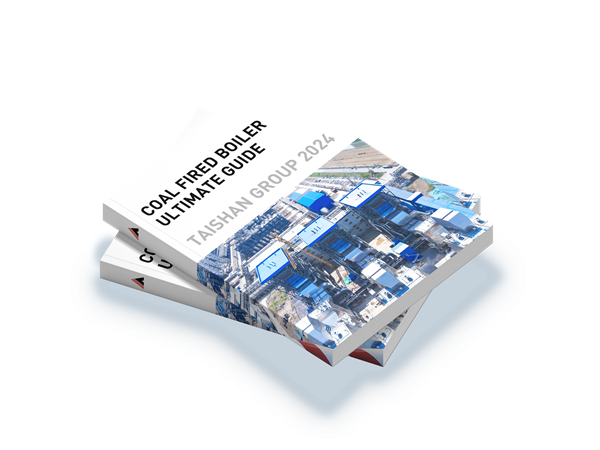
This guidebook serves as an extensive resource for professionals, engineers, and researchers interested in Coal fired boiler. It covers the fundamental principles, technology advancements, design considerations, operational challenges, and environmental impacts of Coal fired boiler. Through detailed explanations, case studies, and practical insights, readers will gain a deep understanding of Coal fired boiler technology and its applications in modern power and heat generation.

